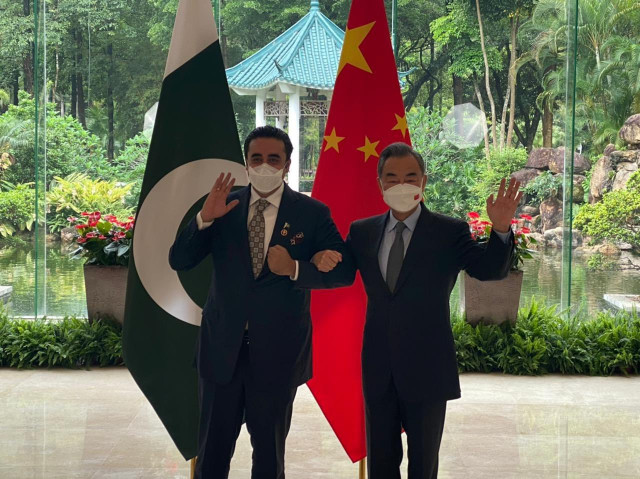China model and lessons to learn
Pakistan overemphasises on taxes which weakens state’s financial health

China is preparing for the 20th National Congress of Communist Party of China (CPC), which will be organised in the last quarter of 2022.
It is happening at a critical juncture due to various reasons. First, it is the first meeting of National Congress after completion of 100 years of the establishment of CPC and achieving the first goal of century.
After achieving the goal of eliminating poverty, now China is entering into a new era under the guidance of CPC and leadership of President Xi Jinping.
Although CPC did a marvelous job by establishing modern China and turning the country into second biggest economy of the world, the new era has its own dynamics.
China has become the great power, which has been accompanied by new responsibilities. Therefore, it is anticipated that the Chinese leadership at the 20th National Congress will be pondering on how its economic model can assist the world by applying the philosophy of economic governance.
Second, China is facing immense negative propaganda and western countries are hell bent on criticising the Chinese model of economy and governance. Besides, they are also very critical of the role of CPC in national governance and economic management. It is turning to be an ideological rivalry.
Unfortunately, there is less focus on understanding the China model and more concentration on maligning the country. There is a need to reverse this process.
There is no second opinion that the Chinese model is different from the existing model of capitalism. It is also different from the USSR’s communism.
China has built its own model, which follows the principles and values of socialism by adhering to the main thoughts of communism and wisdom of 5,000 years. A deep dive into the model highlights that there are five distinct characteristics, which make it different from the other model.
First, the real strength of the Chinese model is the structure of economy. The economic structure is a blend of state and non-state economic actors. It has created a fine balance between the role of state actors (state-owned enterprises) and private sector.
The role of tax and non-tax revenue is also well-defined and balanced. The role of non-tax revenue makes it different from capitalism, which overemphasises on tax revenue.
Although right now the private sector is the engine of growth, still state-owned enterprises (SOEs) are playing a decent role in national economy. For example, in 2021, the share of SOEs was almost 32% in the national GDP. Second, since the start of reforms, China is applying the blend of philosophy of openness by Deng Xiaoping and birdcage philosophy by Chen Yun.
Chen Yun was a great supporter of Deng Xiaoping reforms and contributed immensely to develop and implement the reform agenda. However, his philosophy of birdcage earned him distinction.
He was of the view that cage should not be so small that it suffocates bird, neither it should be so open that the bird fly away. So, the bird (economy) must be free to fly but within the cage (overall plan of country).
It is believed that Deng Xiaoping and Chen Yun’s philosophy helped China to move on the path of growth and development during the most testing times.
Third, the economic model of China revolves around the people. Chinese leadership has adopted the slogan that policy must keep people at the centre and front.
This philosophy not only helped China to grow at a greater pace but also helped to tackle the issue of poverty.
As, we know in 1980, almost 82% of population in China was living below the poverty line. Now China is the only country in the world, which has zero poverty. President Xi made it a cornerstone of his leadership. Fourth, China devised a unique model of reform by following the old Chinese proverb “cross the river by feeling stones”. It means gradual reforms, in accordance with your own needs and problems.
Fifth, the most important element of the success of Chinese economic model is the continuity of policies, system and commitment of CPC leadership to the people.
Since the reforms started in 1978, China is committed to them, without any ifs and buts. Apart from that, the CPC leadership kept people’s welfare at the centre, which helped to mobilise societal support for reforms.
Despite global pressure and criticism, China remained committed to reforms and the welfare of people, which helped them to turn around the fate of people and country.
Third, the leadership tried to seek truth from facts, data and applied scientific methods for policy formulation and execution.
Lessons
From the above discussion, we can infer three key lessons for Pakistan. First, the structure of economy does matter and Pakistan needs to redefine its economic structure.
At present, we overemphasise on tax revenue, which is not a sustainable policy. It weakens the financial health of state, which impacts the ability of state to serve people.
Moreover, due to the lack of resources, the state cannot offer any exemptions or credit to the private sector. Also, reforms and openness must be comprehended properly and tailoured according to the domestic needs.
The key lesson from the Chinese model is that first enhance capacity, both production and human, through favourable policies and investment. Then go for openness according to the production capacity and development status.
Continuity and commitment of the leadership also matters, rather than defining success or failure.
These lessons are also relevant for the global community, especially for the developing and least developed countries. The good thing is that China is ready to share its experience and economic opportunities, as President Xi Jinping has reiterated Beijing’s resolve to contribute to tackle global challenges on many occasions.
The writer is a political economist
Published in The Express Tribune, July 25th, 2022.
Like Business on Facebook, follow @TribuneBiz on Twitter to stay informed and join in the conversation.



















COMMENTS
Comments are moderated and generally will be posted if they are on-topic and not abusive.
For more information, please see our Comments FAQ